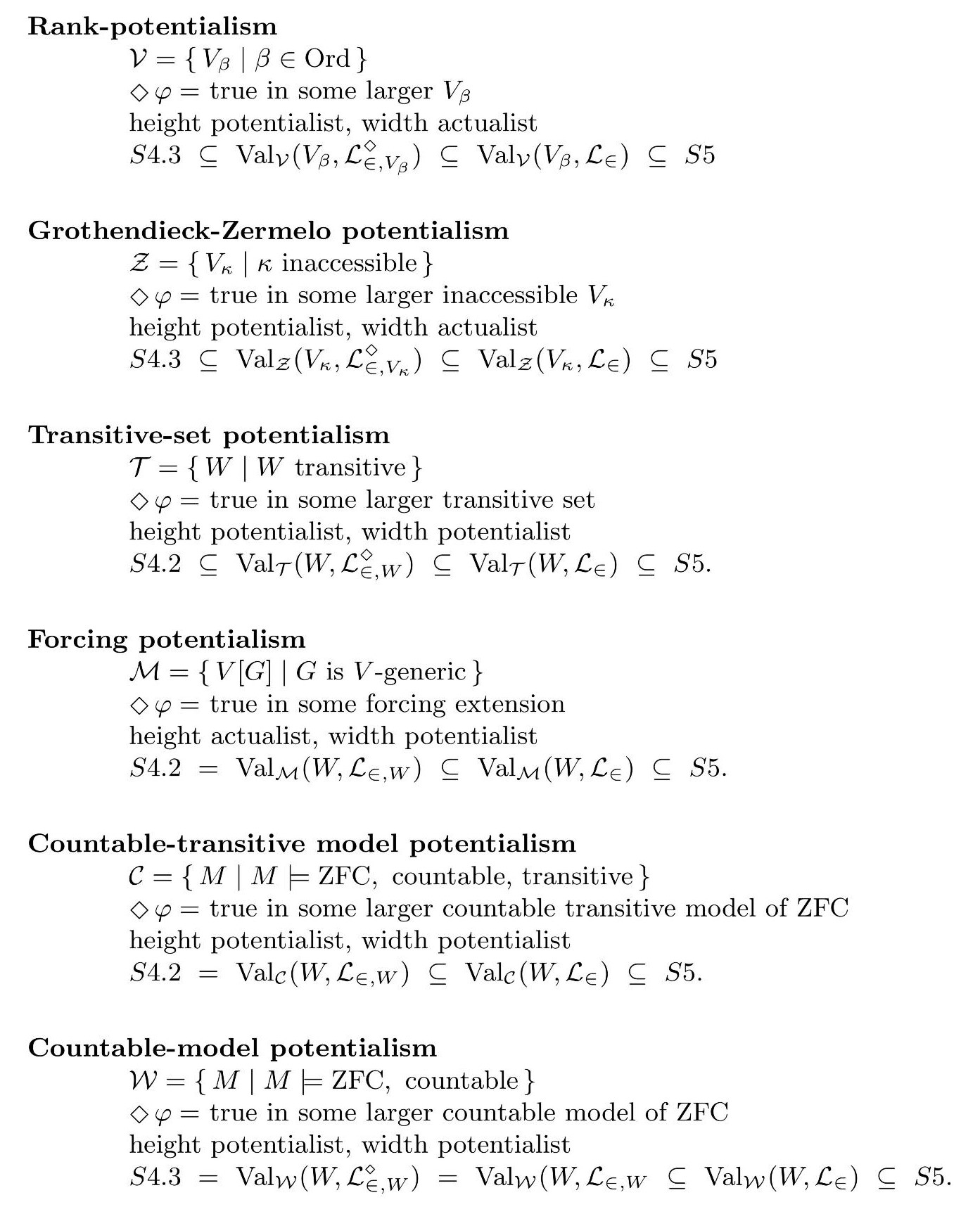The mathematical multiverse could be viewed as a gigantic Kripke model with models of $ZFC$ as possible worlds connected to each other via a certain accessibility relation.
The modal logic associated with this multiverse has been studied in the case that the accessibility relation is set forcing. According to this interpretation, a statement $\varphi$ in the language of set theory is considered possible if it is true in some set forcing extension and necessary if holds in all of them. For more details see:
Hamkins, Joel David; Löwe, Benedikt, The modal logic of forcing, Trans. Am. Math. Soc. 360, No. 4, 1793-1817 (2008). ZBL1139.03039.
Hamkins, Joel David, The set-theoretic multiverse, Rev. Symb. Log. 5, No. 3, 416-449 (2012). ZBL1260.03103.
However, set forcing extension is just a special case of interesting and well-behaved extensions that a model of $ZFC$ might have. If $M$ is an inner model of $N$ then we call $N$ an outer model of $M$. Recall that any model of $ZFC$ could be considered an inner model of its generic extension and so a forcing extension is a special case of an outer model. Of course, there might be outer models of a given model of $ZFC$ which don't arise as a set forcing extension of the ground. A classical example is $L\subseteq L[0^{\sharp}]$.
Now let's ease the conditions in the above interpretations of the possibility and necessity across the multiverse so that $\varphi$ is possible if it is true in some outer model and is necessary if it holds in all of them. Philosophically speaking, in such an interpretation of modalities, a statement is possible if it could be realized by expanding our world-view and is necessary if it holds no matter how we expand our universe. (Here, Plato's Allegory of the Cave might be relevant where the cave or tight universe is our ground model).
In the view of the fact that the modal logic of set forcing multiverse is fully determined by Hamkins and Löwe to be S4.2 (under certain conditions), I wonder what could be said about the modal logic of outer model multiverse.
Question. What is the modal logic of the outer multiverse; the set-theoretic multiverse equipped with the outer model relation (rather than set forcing) as the accessibility bridge between the universes?

